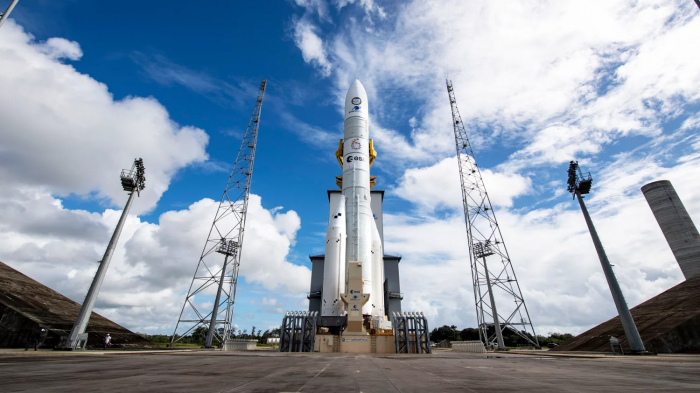Europe's big new rocket, Ariane-6, is set to make its inaugural flight later.
The vehicle will launch out of French Guiana on a demonstration mission to put a clutch of satellites in orbit.
Developed at a cost of €4bn (£3.4bn), Ariane-6 is intended to be a workhorse rocket that gives European governments and companies access to space independently from the rest of the world.
It already has a backlog of launch contracts but there are worries its design could limit future prospects.
Like its predecessor, Ariane-5, the new model is expendable - a new rocket is needed for every mission, whereas the latest American vehicles are being built to be wholly or partially re-usable.
Nonetheless, European space officials believe Ariane-6 can carve out a niche for itself.
"This is a big moment," said European Space Agency (Esa) director-general Josef Aschbacher.
"Daily life today really depends on information from satellites, from telecommunications and Earth observation to weather forecasting and disaster management. It is unimaginable for Europe not to have guaranteed, independent access to space," he told BBC News.
Lift-off from the equatorial Kourou spaceport is scheduled to occur during a four-hour window, starting at 15:00 local time (20:00 CEST; 19:00 BST).
On the surface, the 6 looks very similar to the old 5, but under the skin it harnesses state-of-the-art manufacturing techniques (3D printing, friction stir welding, augmented reality design, etc) that should result in faster and cheaper production.
Ariane-6 will operate in two configurations:
- The "62" will incorporate two solid-fuel side boosters for lifting medium-sized payloads
- The "64" will have four strap-on boosters to lift the heaviest satellites on the market
The core stage is supplemented with a second, or upper, stage that will place the payloads in their precise orbits high above the Earth.
This stage can be stopped and re-started multiple times, which is useful when launching large batches of satellites into a constellation, or network. The re-ignition capability also enables the stage to pull itself back down to Earth so it won't become a piece of lingering space junk.
Tuesday's mission will use the Ariane-62 variant. The rocket will ascend to an altitude of 580km before starting to offload free-flying payloads.
These are a mix of university and commercial spacecraft. They include two capsules that will endeavour to survive a fiery fall through the atmosphere to splash down in the Pacific.
One of the capsules, which goes by the name of Nyx Bikini, is a small-scale demonstrator from a Franco-German company that aims eventually to develop spacecraft that can transport supplies and people to and from space stations in Earth orbit.
More about:















































